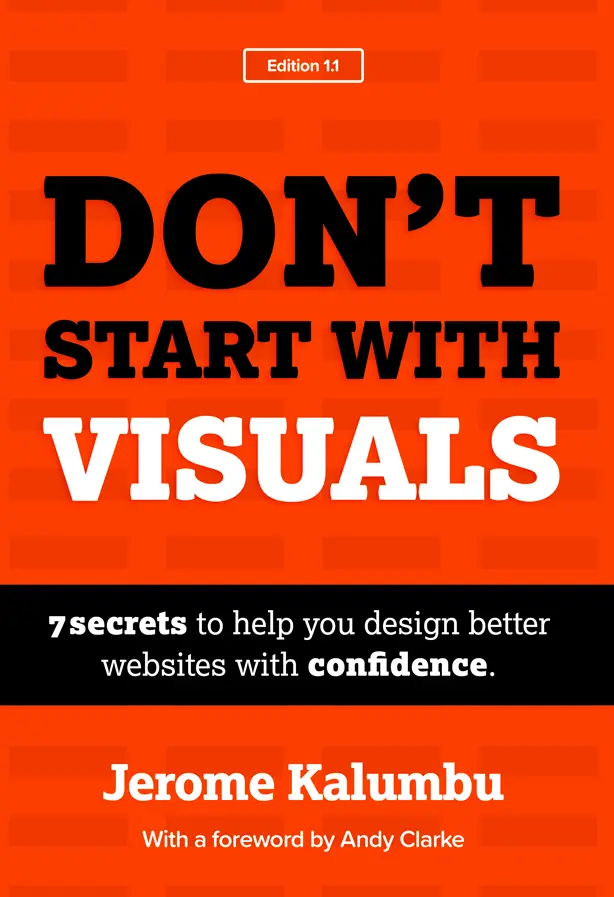Design principles move the decision-making process away from personal opinion and provide a robust framework for making informed decisions to achieve business and user goals.
Why do we need design principles?
Design principles serve as guidelines and frameworks that help designers and stakeholders during the design process.
They provide a solid foundation for design decisions, promote consistency and user-centricity, enhance communication and collaboration, streamline the design process, and contribute to the establishment of a strong brand identity.
Design principles are essential for creating meaningful, usable, and delightful experiences.
These checklists and best practices are solutions to issues that we encountered during a 17-year period of designing digital products and collaborating with stakeholders and clients.
The 6 simple design principles steps
Design with purpose, clarity and elegance
- Don’t make assumptions
Do research, analyse data - Design with purpose
Define brand & user groups - Design for seamless experiences
IA is users compass and guide - Build products with smart, strategic content
Content strategy - Design with emotions and context
Art direction - Make, learn, iterate
Wireframes, prototypes, visuals

Tips: Don't Start with visuals by Jerome Kalumbu - A creative approach with UX design tips to help you design effective and engaging websites. The book provides a step-by-step process for developing and communicating ideas effectively.
Process
Understanding upcoming tasks
- 1.Research - define problems and goals
- Define project roles and responsibilities
- Do research, analyse data. Don’t make assumptions
- Define user needs, fears, struggles
- Define business goals (e.g. drive more leads? signups?...)
- Define the context of the project - initial brief
- 2. Brand and user groups - find solution
- Understand user groups, user questions & objections, user tasks
- Understand how our brand/product can solve these problems
- Understand brand messaging
- Create initial brand guidelines
- 3. Information architecture - define product structure
- Understand hierarchy, content organisation, content tags, categories, user journeys, search functionality and features
- 4. Content strategy - write content draft
- Create content draft for each page, based on user questions
& business goals - Start from landing pages
- Review content drafts, content prioritities and calls to action.
- Use AIDA model and Caveman Grunt Test to verify content
- 5. Art direction - connect your brand with customers
- Define: Design direction,
typography, colour palette,
images, iconography, video and animation style - Create a stylescape or design manual
- Define the feelings/emotions the design should recall
- 6. Interface design & prototype - connect all dots
- Low fidelity visual - make it easier to evaluate product concepts
- High fidelity design closely matches the final result of a product’s design
- Working prototype - test and see product in real environment
- Stakeholder reviews
- Visual, prototype and content iteration based on stakeholder reviews
- Finalise your brand manual
- Bring your product to life!
What happens if you don't follow design principles
When product fails, you fail too
- Iteration hell
- Missing business goals
- Targeting the wrong users
- Not achieving correct conversions
- Communicating the wrong messages
- Confusing interface and user experience
- Confusion about your brand
- Difficult marketing
- Information overload
- High project costs
- Wrong content priorities
- Something feels wrong about the design, nobody knows what
- Wrong decision making
- Increase of micromanagement
- Increased workload for dev team
- Projects involves lots of risks
- Possible project failure
- Who is responsible for mistakes?